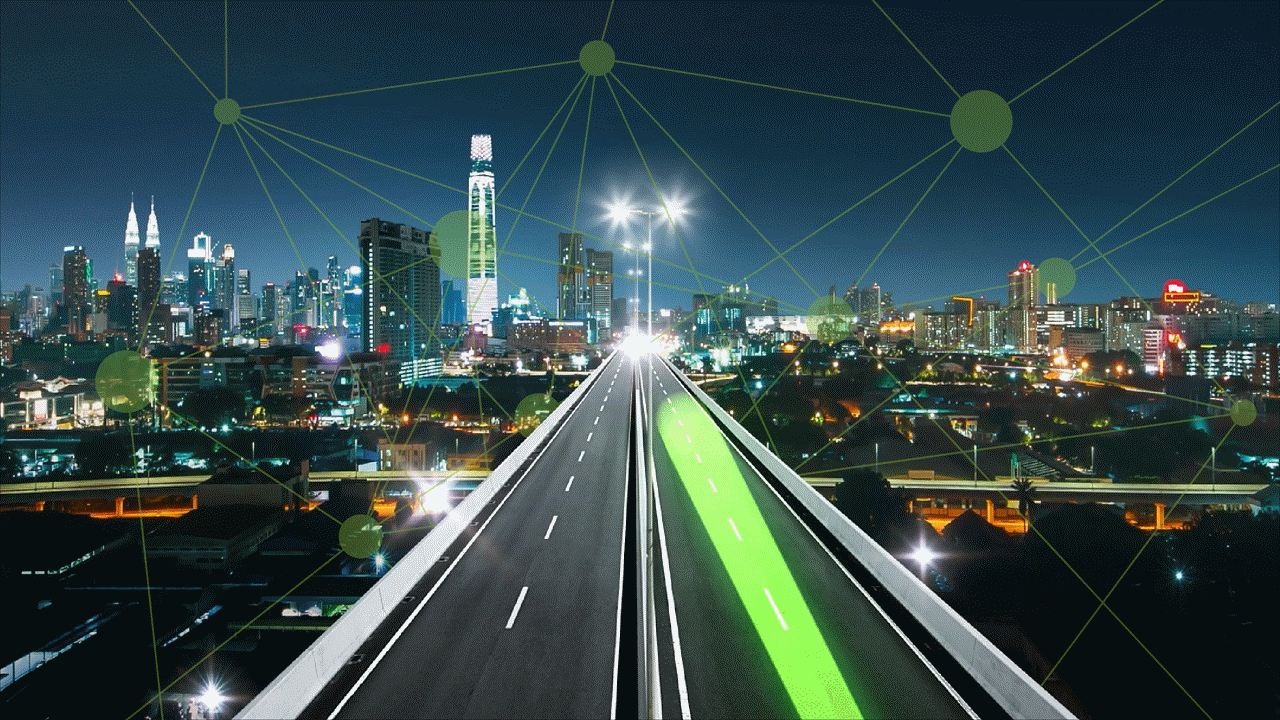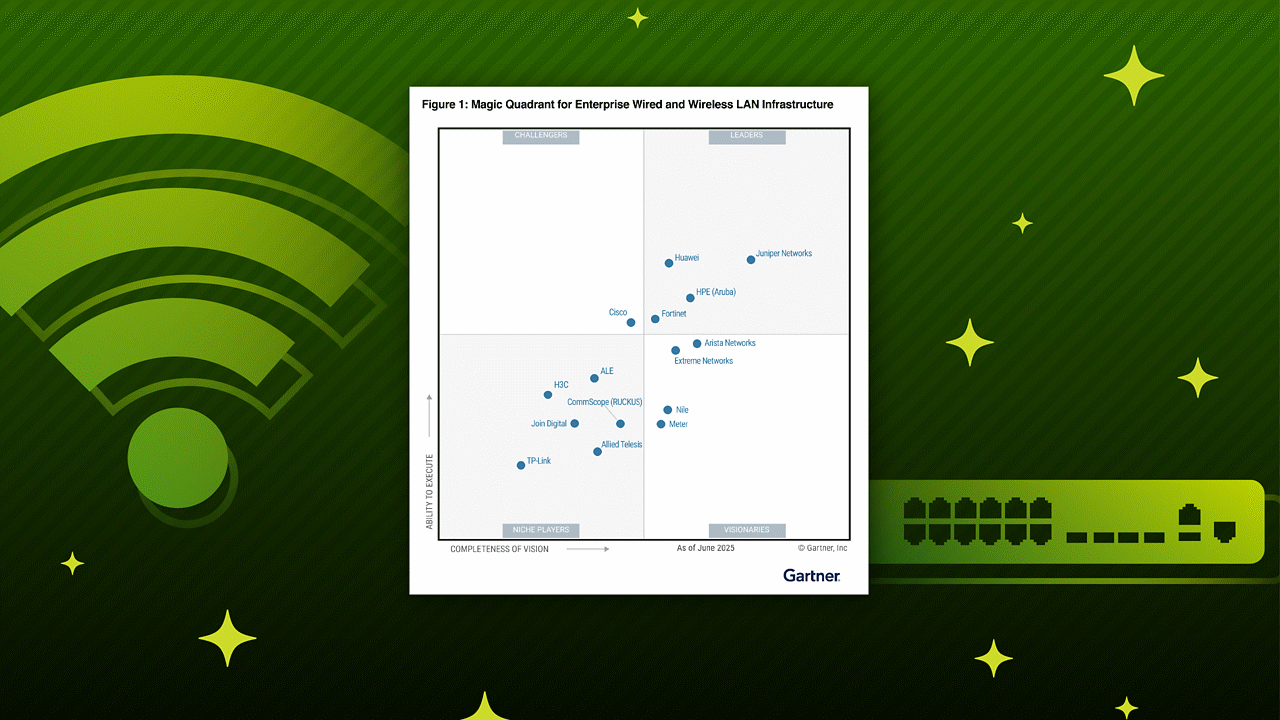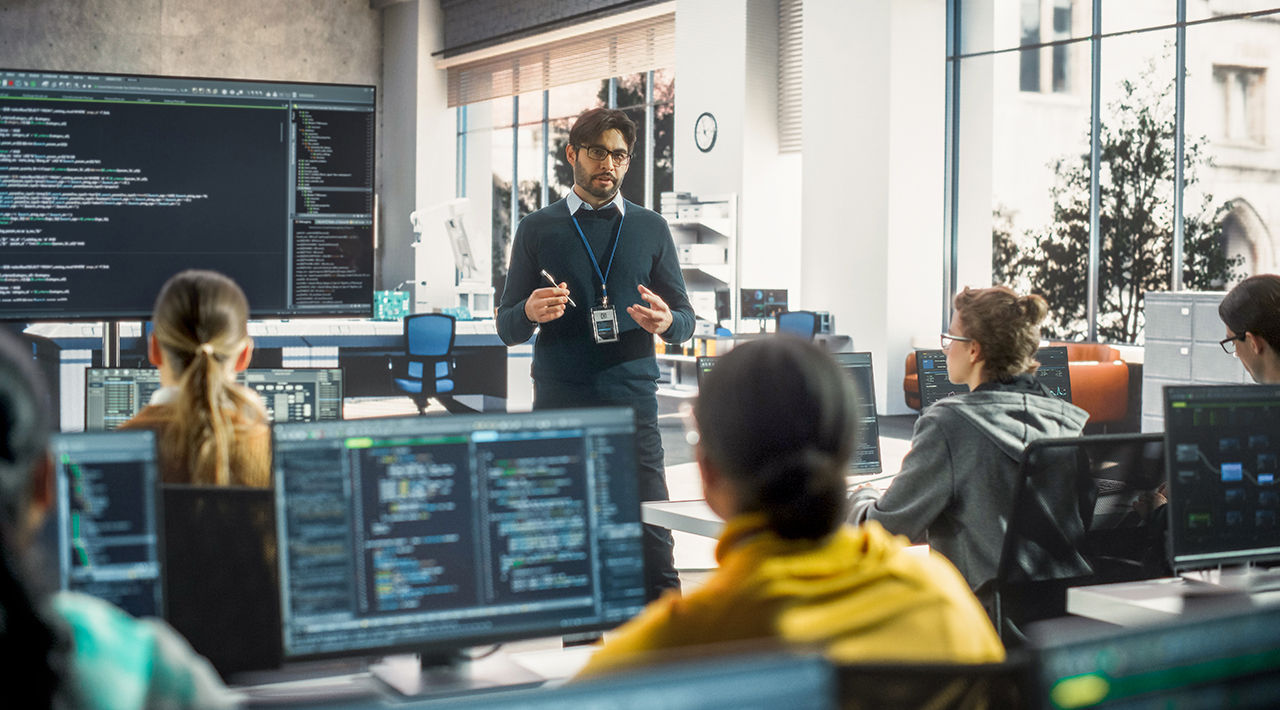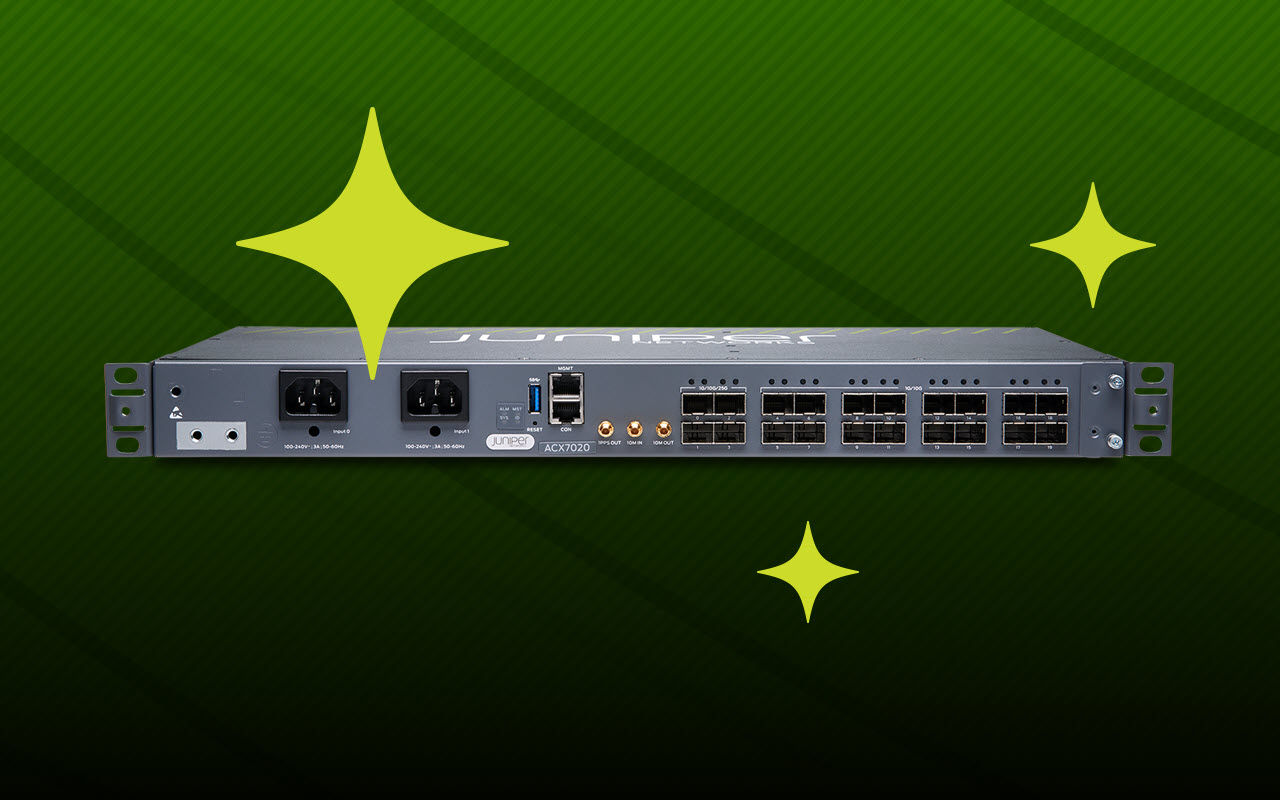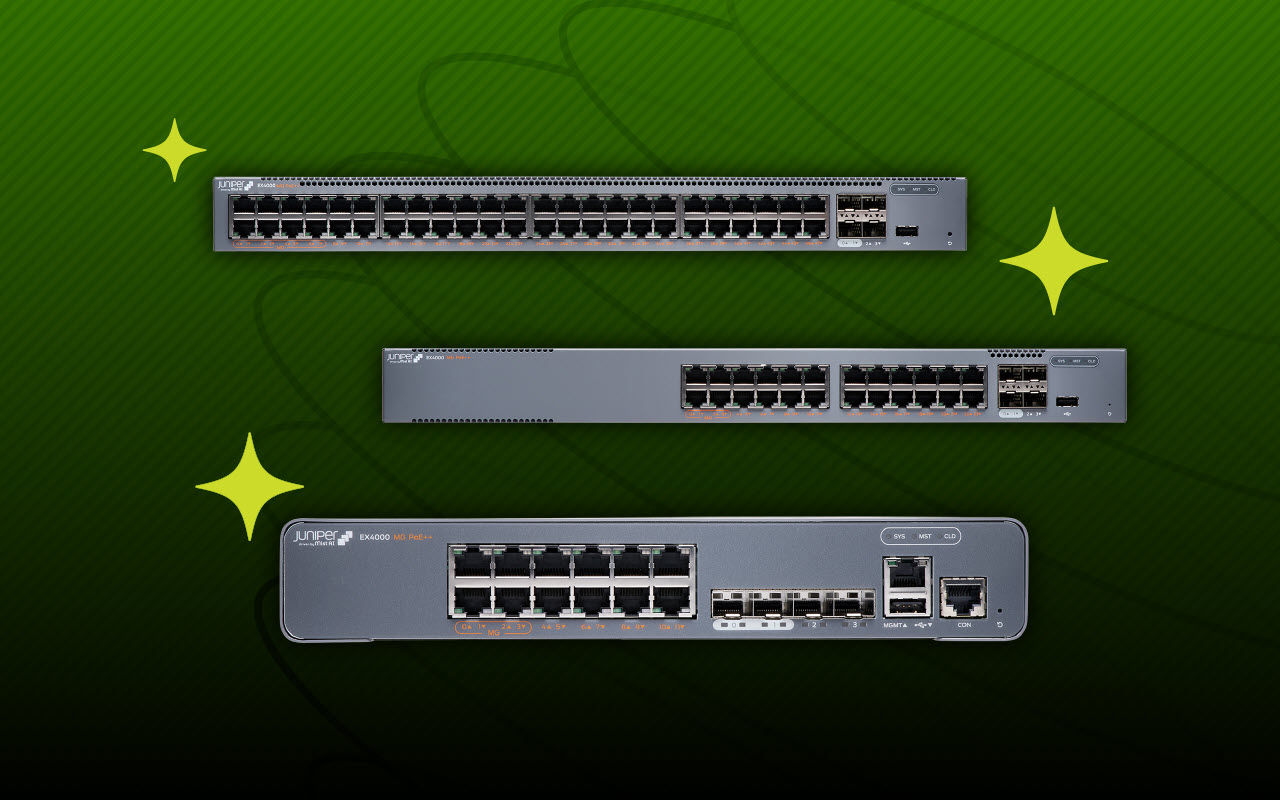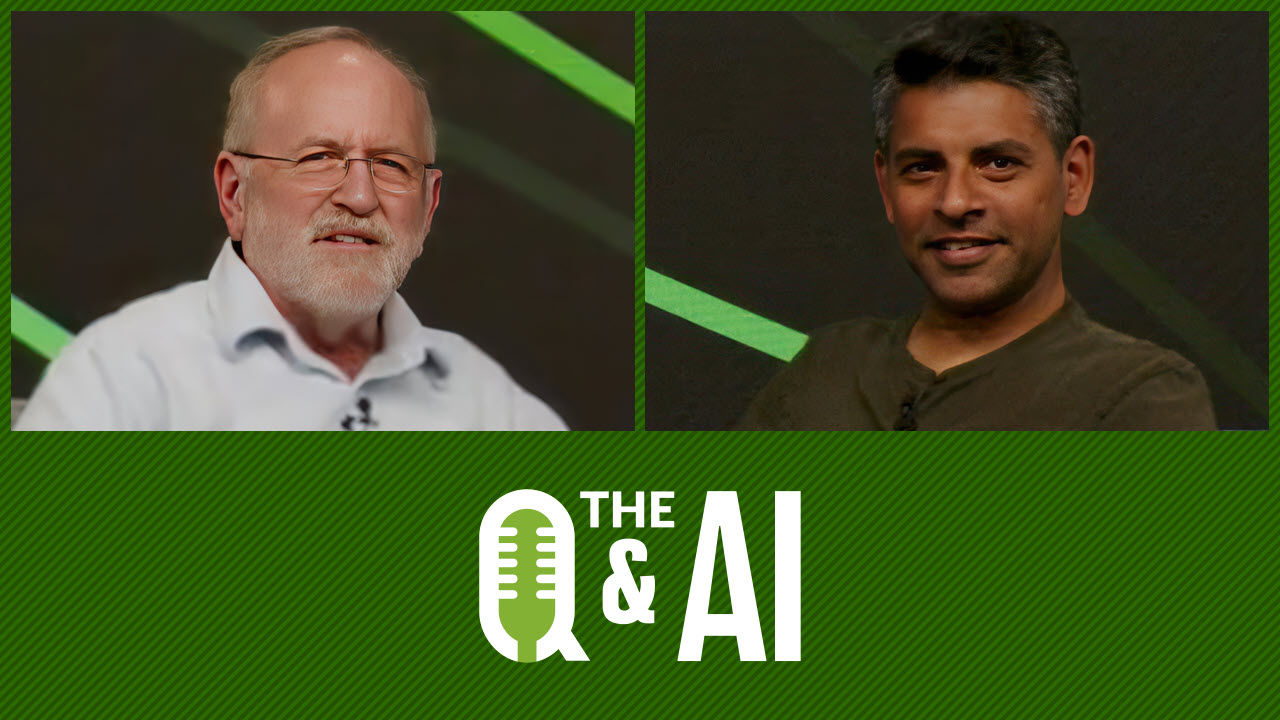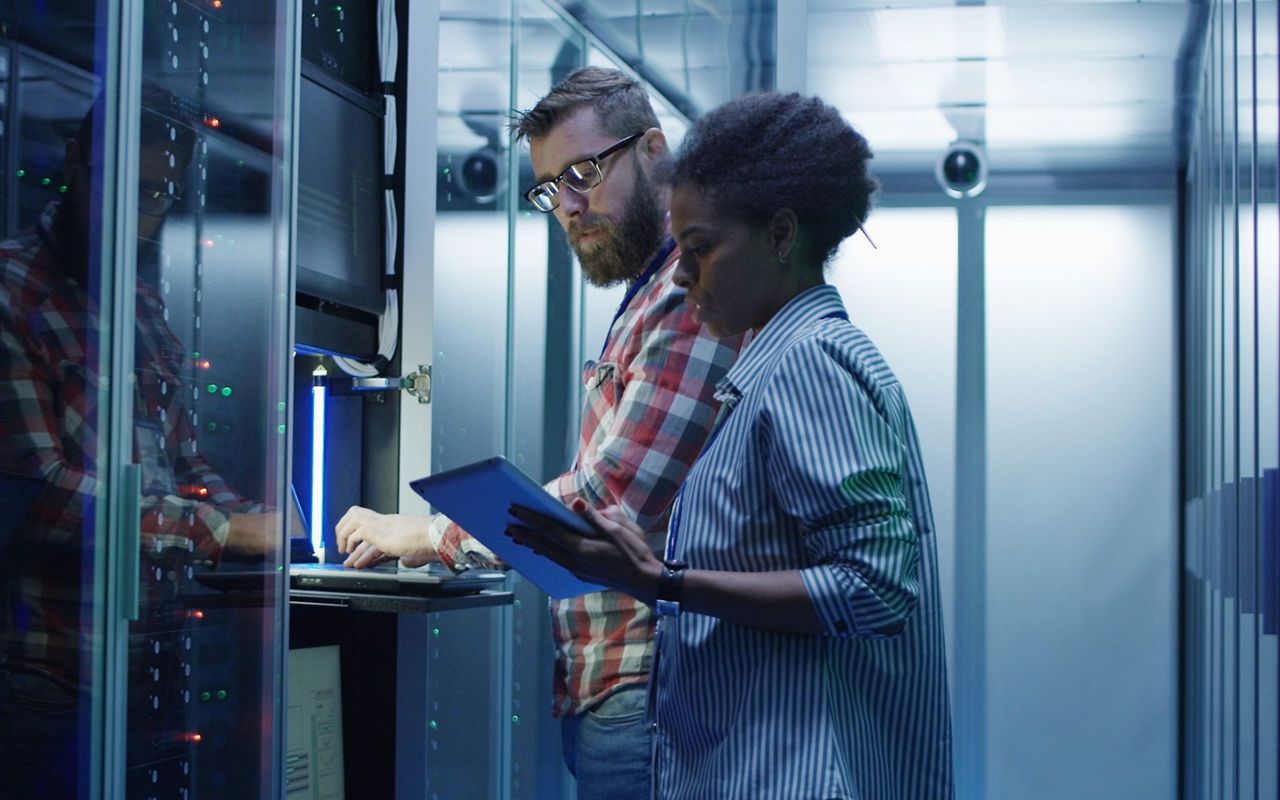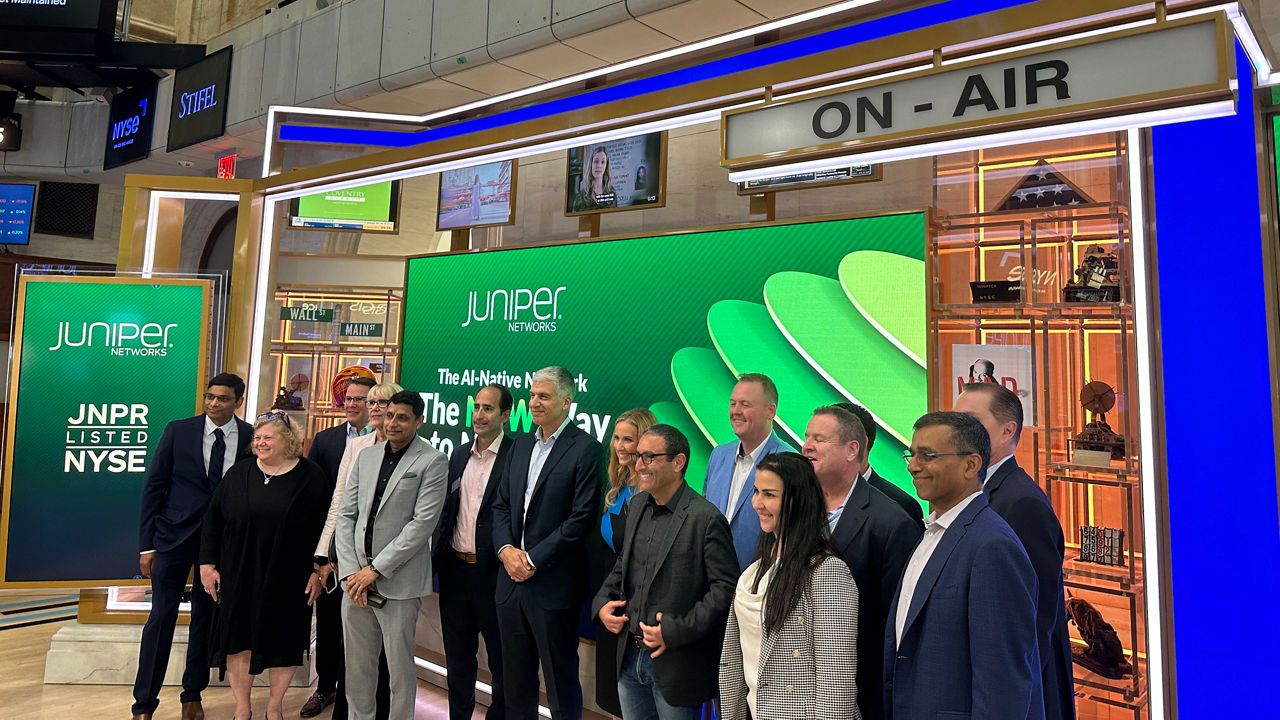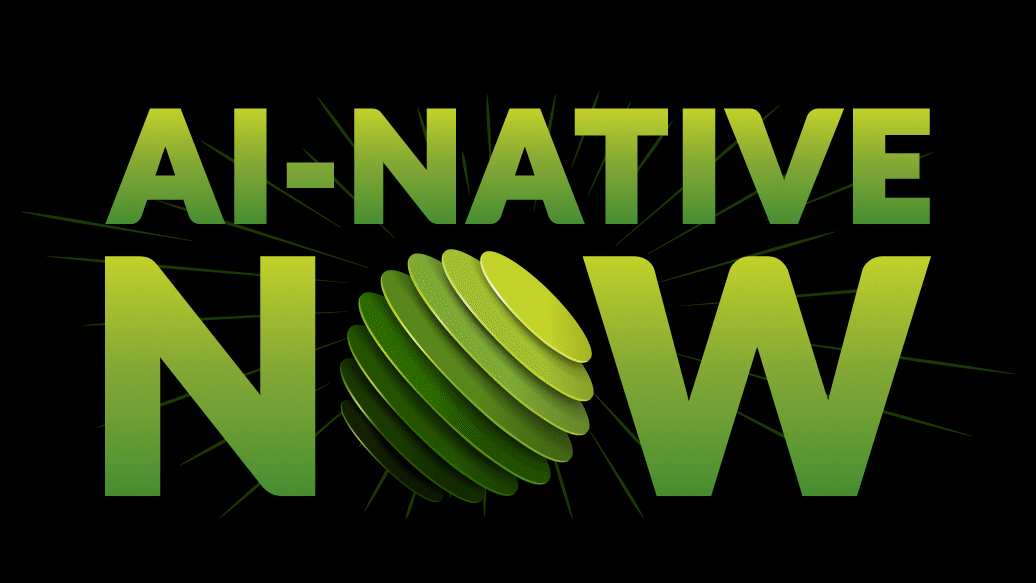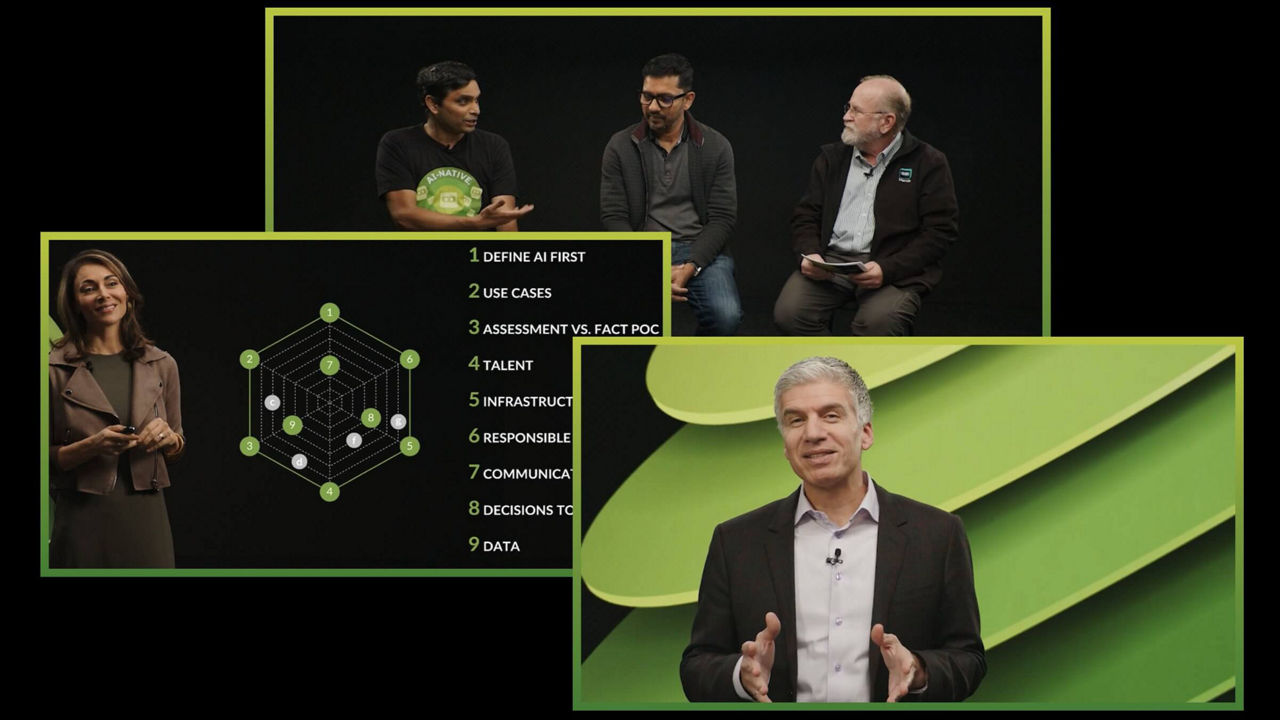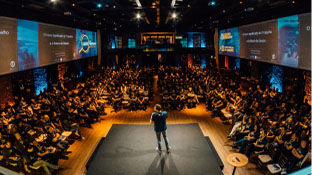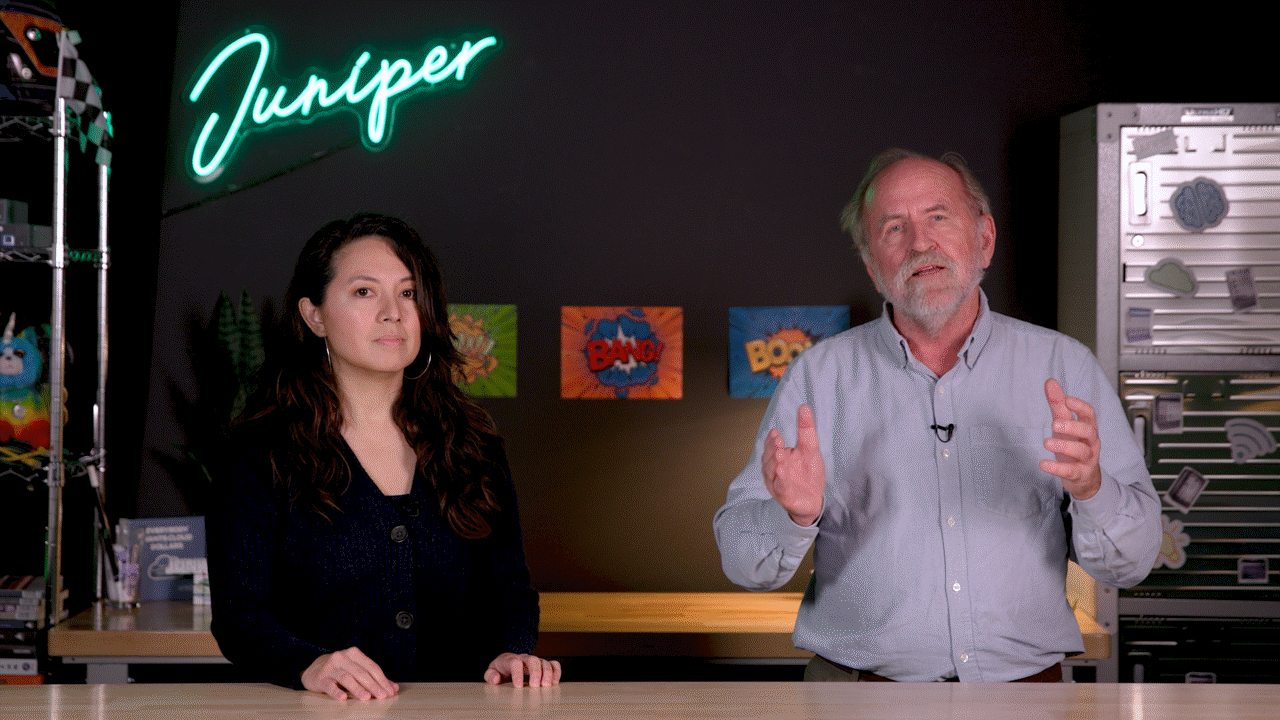Episode 8: From Skepticism to Trust: AI's Industrial Revolution

Episode 8: From Skepticism to Trust: AI's Industrial Revolution
In this episode of The Q&AI Podcast, Bob Friday, Chief AI Officer at Juniper Networks, sits down with Sunalini Sankhavaram, VP of Product at Juniper Networks, to dive into the transformative role AI will play in networking in the next several years. From the evolution of AI skepticism to actionable predictions for 2025, this engaging conversation unpacks the progress, challenges, and future potential of AI-Native networks.
You’ll learn
About the defining traits of genuine AI implementations and their measurable outcomes
About increased adoption of self-driving AI networks across wired, wireless, and SD-WAN domains
How AI will predict and optimize user experiences for critical applications like Zoom, Teams, and industry-critical apps
Who is this for?
Host

Guest speakers

Transcript
Bob: Hi, I'm Bob Friday, Chief AI Officer here at Juniper. Today, I am delighted to be joined on a very special episode of the Q&AI podcast by Sunalini, VP of Product. On today's episode, we're going to discuss our predictions of the impact of AI in the coming year. Sunalini, it's great to have you here. Let's start diving into it.
I know you've talked to customers, hundreds of customers every year. I thought maybe we start with where you see enterprise customers on the journey of AI. I know when we started MIST, I think everyone was a skeptic. AI wasn't even a topic. Maybe give the audience a little bit of where are they on the journey right now from your perspective.
Sunalini: Absolutely, Bob. First of all, very excited to be here. Thank you for having me. And I think the percentage of AI skeptics has gone down a lot since we started our journey here at MIST when we were trying to solve user experience using AI. Today, whether you take retail, whether you take healthcare, whether you take higher education, warehousing, transport logistics.
Customers are actually depending on the capabilities that we provide via Marvis or AI Engine to truly give them better operational efficiencies with networking or leveraging AI.
Bob: So, I mean, I would tend to agree with you. I mean, I think since we started the adventure, you know, I think people are less skeptic about AI.
You know, when I talk to most customers, I think they're kind of in that trying to understand the difference between marketing AI, real AI, they know AI is going to make a difference in their business, how do you give customers, what advice do you give customers on how to tell the difference between marketing AI, real AI, maybe start with what is real AI to you?
Sunalini: Great question, Bob. And I always say the proof is in the pudding, right? When we deploy networks every day across all our customers globally, the first response our customers give us is, the network just works. That's great to hear, but we know the network just works because AI is doing its job. When I talk to customers and customers always ask me, well, you know, you showed me these great things that Marvis can do and what AI can do in networking.
What are the actual proof points that can drive benefits for me, for my network operations? The number one benefit we always talk about is reduction in the number of tickets coming in. That means we have happy end users connecting to the network and consuming
applications. The second proof point is reducing the overall time to resolution for tickets that do come in, right?
I mean, Bob, you know this. You talk to ServiceNow, I talk to ServiceNow. They had a 90% reduction in tickets because of AI capability that we provided as part of our network operations.
Bob: Yeah. So, you know, I, for you, I'm a CTO and, I like the technical thing. Part of me, people tell me, Bob, it doesn't make any difference how you do it.
They just want to know about the business outcomes. But we both know there are customers actually who really care about how it's done under the hood. So, when we look at, machine learning that we've been doing for 20, 30 years and deep learning. Do you have any definition of real AI? When they look under the hood, what should a customer be looking for?
Sunalini: Absolutely. Great question. I would actually tell our customers, question the vendor, question the company on what exact AI models they're using to deliver what capabilities that drive operational simplicity. For example, like you said, machine learning has been there in the industry for decades.
But what do you do with that foundational machine learning? That's where AI comes in. And it's not just generic AI, right? It's more about deep learning, reinforcement learning where you can come out with more and more models, fine tune those models based on the large data sets to deliver again that visibility and more proactive actions around how to really self-drive your network.
Bob: Yeah, so I mean, I would agree with you. I think, machine learning has been around for years. We've all been using it. It's really these deep learning models where we're basically building very large models with very large data sets. That's really. Disrupting a lot of industries are in right now.
Sunalini: Absolutely agreed. I mean, you take radio resource management, for example, right? It's been there since you started your your last company decades ago. But why is it now that it's gained so much traction that customers rely on it? It's all because we're using
deep learning on the radio data that we're getting to drive truly self-driving networks on the wireless.
Bob: Now, I think as you kind of mentioned right now, ultimately, it's about the outcomes, you know, ultimately customers really have to do POCs to actually see the difference of whether or not AI is doing the outcomes they want. But, if a customer is trying to figure out whether or not to do a POC, any advice to a customer who's trying to decide whether or not it's worth doing a POC? What should they ask a vendor, who claims to be doing AI?
Sunalini: They should ask the vendor and that's the claim that we make every time we talk to a customer. Can I put your AI to task in my most difficult deployment in my most difficult location and see how the AI can transcend some of the issues I see day in day out of my current solution with a true AI driven network.
Bob: Yeah, so you know me, you know, I always tell people is, make sure that the vendors actually using their own AI, customer success and support as a proxy for the real customer. And if they're not using it, then why would you expect your customers to use it?
Sunalini: Absolutely, and that is where the AI driven support model comes into play, right?When we look at the way we are growing, we are, as you know Bob, the leader in wired wireless in the Gartner Magic Quadrant, have been the last three to four years now. But the key part is, at the rate that we are growing, has our customer success team really grown? It hasn't, and the reason for that again is because we eat our own dog food.
Not only do we deploy our networks at Juniper, that's a given, but more importantly, for every customer ticket coming in, our services organization is part of the product team, and it's using AI to solve those trouble tickets. And that is where we keep getting better and better, and training our AI engines even more efficiently.
Bob: Okay, so now we just finished up Thanksgiving, we're heading into Christmas, and right after Christmas comes New Year's, and what comes in the years is predictions. Now, I know you're the product manager for Marvis. So maybe, you know, give the audience a little bit about where is AI headed? For me personally, I just took my first self-driving Uber
Waymo. I didn't think I'd be around being in a self-driving car. How close are we getting to the self-driving network vision?
Sunalini: A great question again, Bob. I think again, talking to customers, the first part is given that our customers are becoming less and less skeptic of AI and more trusting AI, it's more about how much they want true self driving versus what we call the driver assist mode.
So, my prediction for 2025, where AI will have an impact on networking, networks will be delivering more self-driving AI for wired, wireless, SD WAN networks. And customers will be trusting it more. Now let's go a little bit deeper though, Bob, on what does AI mean, right? AI could be the conversational interface.
AI could be proactive actions that the network automatically takes to ensure user experience is met. AI could be a whole new way you interact with the network when you're looking at how your network is doing in terms of monitoring or real time troubleshooting.
So following on with the prediction of more and more adoption of AI for true self-driving is also the other aspect that I think, and I would love to hear your thoughts on it, on customers interacting with the network via primarily a conversational interface where the conversational interface is telling them things it's doing, that it's remediating for them automatically, or it's notifying them of issues proactively or they're using the constant interface to interact with the network to get meaningful insights on how the network is doing.
Bob: Yeah, well, you know me, I always tell people that, AI is actually the next step in the evolution of automation, right? The only problem with this step here is we're actually building things that are doing things on part of cognitive reasoning skills, right? In the past, the automation was always kind of very deterministic, right?
When we build these AI assistants. It's almost like hiring a new intern to the team you have to trust, right? Before we built things that did the same thing day in, day out, right? You know, you ran the script, you ran the unit test. You know, now we're building these agent frameworks, non-deterministic, non-linear.
I actually built my first one last, I think, two or three weeks ago. I built this little thing to basically summarize articles on the internet, right? And I had no clue. Built two agents,
gave them this task, and had one of these agents write in Python code. I had no clue it was going to do that.
Very non-deterministic. So yeah, when you look forward, you know, next year with conversational interface, what do you think about the audience of trust? When I got in that self-driving Uber, I had to trust that that Uber was going to get me from A to B, figure out where to drop me off. You don't think we're going to be seeing Marvis and the self-driving, the AI assistants actually twisting the knobs on the network? Beyond RRM. RRM does not count.
Sunalini: Yeah. No, I think it all goes hand in hand with efficacy, right? As long as the conversion assistant and the way our customers interact with our solution is able to give them a high efficacy response, even though it's not as doministic as, as automation typically is, we will gain that trust and customers will deploy and use it more and more, but there will always be a fail-safe.
There will always be a driver assist mode, right? There may be some action that they will trust the AI engine to do by itself. But there'll be some actions where they will say, no, let me know what the issue was and I will go and take care of it, via the constitutional interface, right? But Bob, the other thing also is what I see, the third prediction coming in is, we will evolve more and more from, so far, we focused on user experience, right?
From an, then that's how AI came into the picture for the MIST stack. This will also go more and more into the application experience for the users as a third prediction with 2025 and how AI will help us achieve that vision much more effectively than we have in the past.
Bob: Yeah, I mean, if you look where AI started, you know, we started with kind of big convolutional networks for computer vision. That was kind of the first big initiative inside of AI. And with ChatGPT, we started building these large language models to actually start predicting words and everything. When you look in the networking world, any thoughts on where we're going to be using large models, large data sets to actually predict user experience. Is that headed our way?
Sunalini: Oh, absolutely. And I think it will be user experience for critical applications too and not just user experience by itself. So large language models will go towards involving large experience models. Whether it's your collaboration app like a Zoom or a Teams,
whether it's your mission critical app like a point of sale or a medical application that is used by healthcare, caregivers in the healthcare vertical, or even in higher ed, all our learning applications, right, where we see AI coming in, where we see our customers driving us in the direction of, hey, It's great that you can tell me that the user experience is good on the network and help me keep it so.
But the next step would be, it's great whether you can tell me that the application experience for every end user is the most optimal it can be and then be able to predict what the experience could be if they're not running an application right now. I think that's definitely where the world of networking, AI, user experience is headed. It's all about the experience of the application. For every end user.
Bob: Okay, so maybe one final question. One final prediction for the audience here. When are we going to see our IT departments actually let more of us actually start turning the knobs on their switches and routers? Everyone tells me Bob that wireless stuff was easy. These routers are much more complicated, and the switches. Are we going to see that in 2025?
Sunalini: I think we definitely will see some part of it. Today, where endpoints get stuck and the traffic is not moving anymore, that's where the customers are telling us, hey, don't wait for my network administrator or my helpers to take action.
Marvis, you know there's a problem. You know that client is in distress. Just take the action. So, whenever there's a catastrophic issue where the client is literally in a stuck state, getting that client to move traffic again, we will be in true self-driving mode. For other things that are more degraded state where the customer want to know what the issue is, but don't want to take action.
That's where we will be in more of a driver assist mode making the recommendation. But we definitely will see more and more self-driving on wired and WAN. And the customers will want us to do that because they're seeing. Again, it's all about that meantime resolution. If Marvis can fix the issue faster, why wait?
Bob: Okay. Well, Sunalini, I want to thank you for joining us today. Love the predictions. Look forward to working with you next year and see which ones come true. Want to thank
the audience for joining us on this session of Q&AI episode and look forward to seeing you again next week.
Sunalini: Thank you Bob, great being here.



